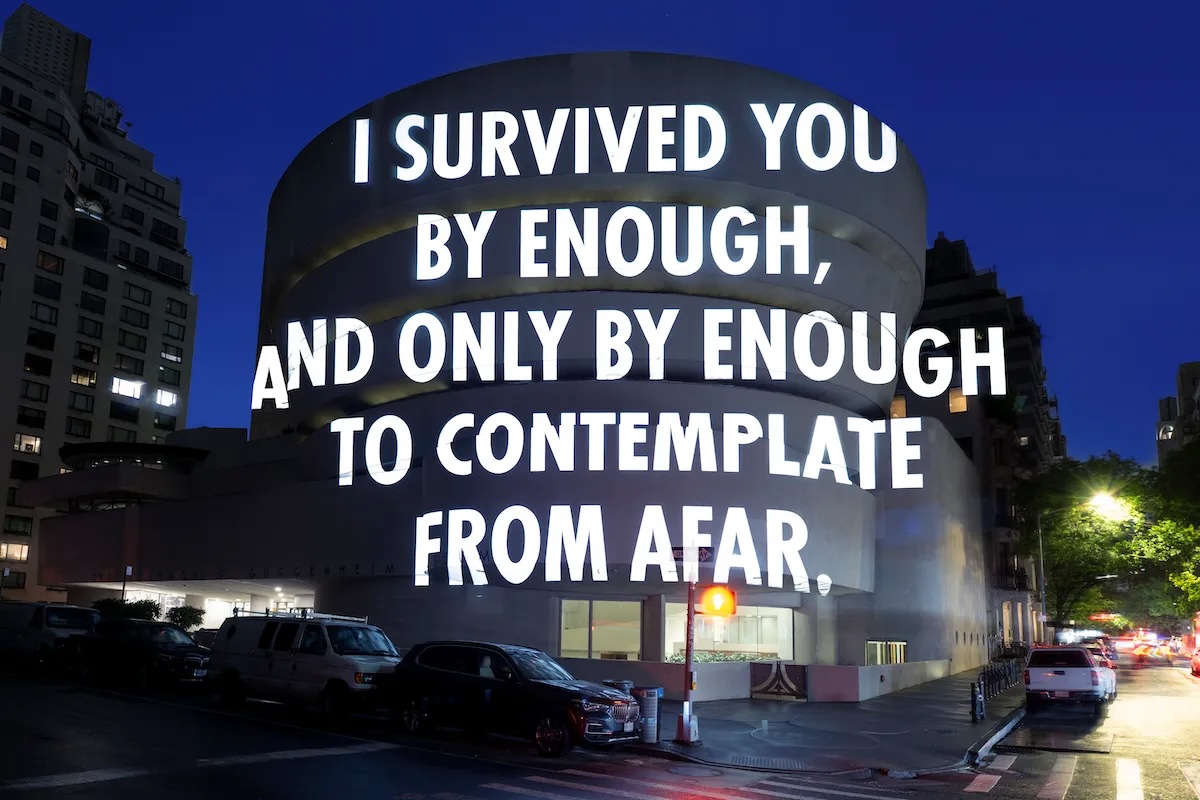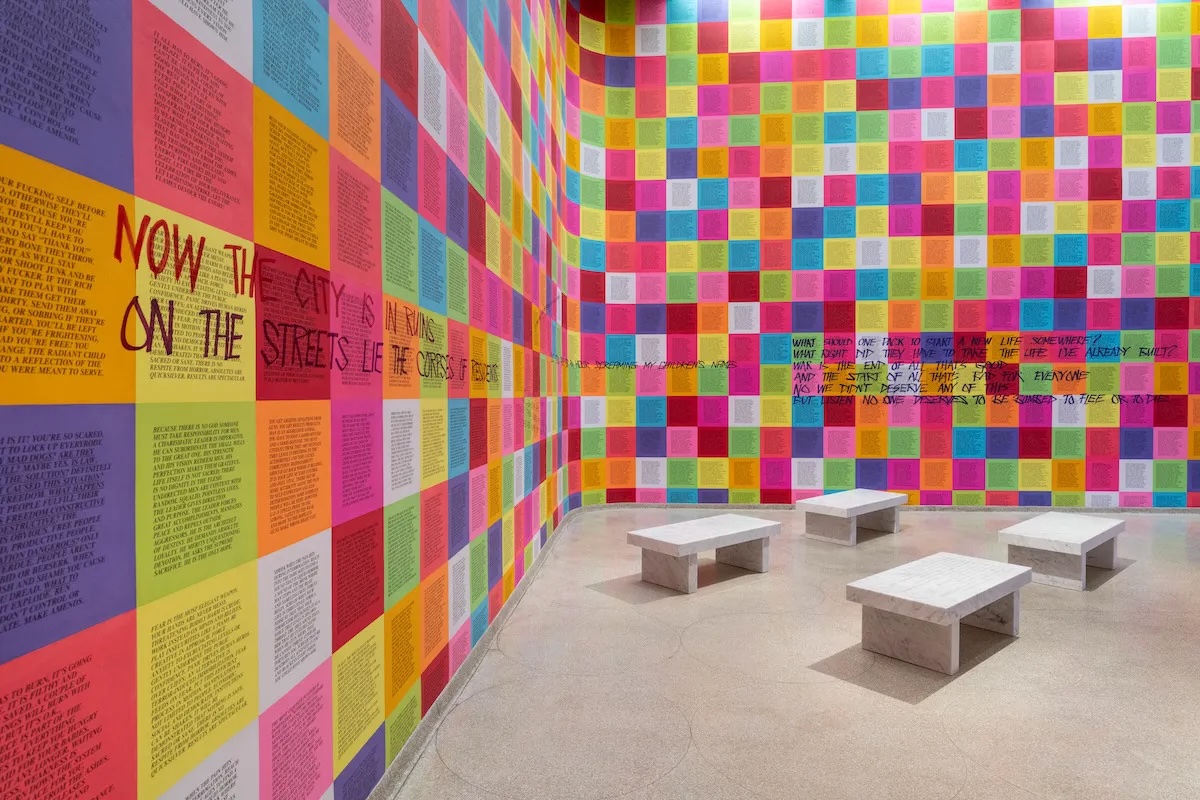Almost 35 years ago, Jenny Holzer created a spiraling LED display that snaked up three levels of the Guggenheim Museum’s Frank Lloyd Wright–designed rotunda. Blinking while changing colors, fonts, and effects, the display was the world’s longest at the time and projected the aphorisms that, beginning in the late ‘70s, would propel Holzer to fame. The Surface cover star reached her biggest audience when, in 1982, an LED billboard told Times Square that “abuse of power comes as no surprise” and “private property created crime.” The closest comparison to her signboards might be “the crawl”—the scrolling tickers that ran along the bottom of the screen during cable news coverage of the 9/11 attacks and would soon become fixtures of those networks.
Our political climate may have shape-shifted since 1989, but there’s still an abundance of dark realities that Holzer’s text-based artworks can plumb in the search for truth and hope. She recently collaborated with the Guggenheim on “Light Line,” an exhibition that reimagines her landmark artwork for today. This time around, she treats the entire museum as an installation. Her signature Truisms and Inflammatory Essays remain intact—an expanded LED sign scrolls up all six levels of the ramp and runs for more than six hours without repeating. According to curator Lauren Hinkson, the slower pace appears “as if you’re drinking the words.”


